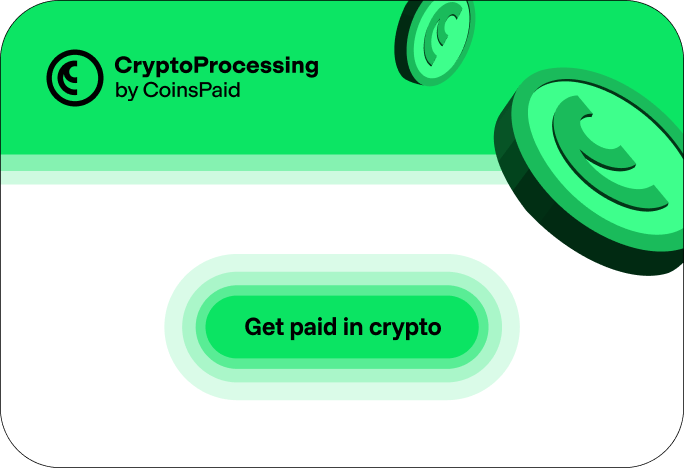The Move-to-Earn sector’s popularity continued to rise in 2023. Numerous new and exciting projects emerged, and some leaders in the field further solidified their positions. In this piece, we’ll examine the highs and lows of M2E projects in the past year and explore the sector’s outlook for 2024.

M2E Market Situation in 2023
In 2023, the market cap of Move-to-Earn projects nearly doubled from $350 million in March to $552 million in December. Despite having only 20 active projects in the Move-to-Earn sector by the end of the year, half as many as in 2022 (hereinafter statistics are based on CoinGecko data), the market cap still increased significantly.
M2E token holders followed market trends, and the trading volume in the sector varied depending on the rise or fall of Bitcoin. The peak trading volume of M2E tokens was recorded between February and March 2023 and from the end of October. During these periods, the crypto market experienced a spike in activity, as the price of the first cryptocurrency was on the rise.

Successes of M2E Sector Leaders in 2023
The Move-to-Earn leaders we wrote about earlier encountered challenges throughout the year. However, they still maintained their leading positions and user loyalty.
In 2023, STEPN, one of the pioneers of the Move-to-Earn concept, failed to recover from a massive drop in the middle of last year. The GMT project’s governance token fell by 32% over the year. Peak quotes were recorded at $0.62 in February, and the asset’s value hit its absolute minimum in November, reaching $0.14. STEPN Green Satoshi Tokens (GST) also lost in price over the year:
- GST-SOL fell by 32% and is trading at $0.0146;
- GST-ETH lost about 20% and is trading at $0.054;
- GST-BSC dropped by half of its value and is trading at $0.0108.
Genopets, another sector leader, saw only around 16% of its value lost over the year, but GENE quotes rebounded strongly towards the end of the year, doubling in a month. GENE peaked at $1.14 in January 2023 and hit its lowest point of $0.14 in early November. As of December 18, GENE is priced at $0.57.
Owners of fluffy pets of M2E app Walken were also somewhat disappointed with the project’s success this year. The WLKN token peaked at $0.053 in February but slipped to $0.0037 by mid-October, losing over 80% of its value over the year.
But the last two apps from the TOP 5 list of 2022 leaders showed the highest productivity this year. Digital Fitness (DEFIT) quotes grew by 33% over the year, and the project’s market cap hit $2.5 million. As of December 18, the token price is at $0.086, even though the project recorded the absolute minimum value of its native token at $0.0138 on October 30. The dotmoovs project was the runner-up, with MOOV’s price increasing by nearly 43% over the year, reaching an annual high of $0.013 in February and trading steadily in the $0.003-0.004 range throughout the rest of the period.

New Major M2E Projects
In 2023, the list of top M2E projects was expanded. Projects that managed to successfully launch financial ecosystems at the end of 2022 entered the arena.
Sweat Economy
The project rolled out in 2021, but the app didn’t launch its token right away. The project team initially warned users that the project had a large-scale roadmap and would be developed gradually. And that’s how it turned out, despite the fact that some users doubted that the project would enter the market at all.
The app allows users to earn Sweetcoin tokens for steps taken. You can install a special step tracker on your phone. The system will give you 1 Sweetcoin for every 1,000 steps you take. These tokens can be used only within the application: exchanged with other participants, given to charity, or used to buy items from project partners or discount cards. By the way, the range of offers in the Shop section is growing exponentially, a testament to the project’s popularity.
September 2022 marked the release of the SWEAT native token that was listed on major crypto exchanges. Before the financial ecosystem was officially launched, the project team conducted a four-month marketing campaign with beta testing of the crypto wallet app for the coin with real users. Those who decided to join the project at this stage were able to receive SWEAT for reviews, finding bugs and for any activity in the app.
During this period, users were especially active. Some of them even created automatic clickers and account farms to multiply the rewards since the team planned to distribute about 10% of the tokens among users, converting the earned Sweetcoins to SWEAT at a 1:1 rate. The hype around the project was intense, so right after the official launch of Sweat Economy and the listing of SWEAT, its price began to plummet. Most users waited too long to withdraw their rewards, so they sold everything at the first opportunity.
After the first wave of activity died down, the project returned to stability. Over the year, SWEAT dropped by only 4%. As of December 18, the market cap of the token is $98 million, and SWEAT is $0.012.
As with other M2E projects, SWEAT is getting harder to earn. The project’s tokenomics involves the gradual unlocking of new coins over the course of two years after the ecosystem launches. At the time of the project’s launch, 1 SWEAT was equal to 1,000 steps. Now, you need to take almost 5,000 steps to earn 1 SWEAT. In a year, you’ll need more than 12,500 steps to earn a coin. This token earning mechanism makes tokens more valuable, so the value of the asset is likely to rise. This is proved by the solid second position Sweat Economy holds in the ranking of the best M2E projects of 2023.
Step App
Step App was another prominent M2E project in 2023. It stands out among its competitors, as an entire ecosystem formed around it during the year.
The app was launched in April 2022 on the Avalanche blockchain, but the project also has its own blockchain, Step Network. The tokensale of the governance token FITFI took place on Dao Maker and raised $2.75 million. Remarkably, the initial sale was held before the listing and the launch of the official app. The project owes its success primarily to the team working on it. Kirill Volgin, ex-CEO of cryptocurrency wallet Zerion, is the CEO of the project. He gathered a team of professionals and attracted Jamaican track and field athlete Usain Bolt to the project as an ambassador.
Besides the governance token, you can earn KCAL, an in-game token of the Step App ecosystem. Users receive it for jogging and other activities.
The Step App ecosystem consists of the following key elements:
- A fitness app that offers personalized workout plans designed by artificial intelligence to optimize fitness regimes.
- The KCAL marketplace. A DEX platform that allows users to exchange earned tokens for charity and health-related goods and services.
- The Fitness Metaverse. Virtual space where you can go on virtual runs with other users and earn tokens. It’s basically an interactive way to stake coins.
- The NFT collection. It includes exclusive digital assets — NFT sneakers, watches, and headphones — that enhance the profitability of interacting with the app.
- The cross-chain bridge.
Even though the FITFI and KCAL tokens lost 78% and 92% over the year, respectively, the project remains quite popular among players. The app was downloaded more than 300,000 times, and its users actively trade NFTs in the Step App.
As of December 18, FITFI is priced at $0.0079 and the project’s cap is estimated at just over $19.2 million. KCAL is valued at $0.16 with its capitalization at a little over $625,000.

Promising M2E Projects of 2024
Some M2E projects that haven’t made it to the top of the ranking yet deserve attention. Their concepts could bring results in 2024.
DOSE
While this project isn’t even one of the top ten M2E projects, it certainly has a unique concept. The name of the project is more than just a bunch of letters, it’s an abbreviation consisting of four hormones that our body secretes during physical activity — Dopamine, Oxytocin, Serotonin, and Endorphin.
The project’s ecosystem is based on DOSELAND, a Metaverse populated by various game characters. Users control them and move them around the virtual dystopian world, performing various physical activities in reality.
Along with the traditional running, walking, and training necessary to earn crypto and interact with the project’s Metaverse, the DOSE app offers users to take bicycle rides. You can ride both a real bicycle by connecting the Smart Bike program and an exercise bike in the Dustland Rider Metaverse. The project team called it Ride-to-Earn (R2E).
The native token DOSE was listed in November 2021 and showed quite good trading volumes at $0.15 in H1 2022. However, the end of last year was an absolute flop for the project. The asset fell to $0.06. Then, bear trends in the crypto market and the lack of any active actions on the part of the project team led to DOSE reaching its absolute minimum of $0.0012 in October 2023. Overall, the asset dropped in price by 53% during the year. As of December 18, the price of DOSE remains at $0.0025.
But regardless of the apparent failure, users remain loyal to the project. The project’s total capitalization is $4 million, and the daily trading volume doesn’t fall below $1.5 million.
The prospects of the project at this stage are determined primarily by its collaborations with large NFT collections. DOSELAND regularly holds virtual competitions, where users receive various items of clothing or equipment as NFTs and special prizes for participation and victory. For example, participants of the Operation Ape competition could not only earn NFTs but also exchange their rewards received in DOSE coins for ApeCoin tokens. And at that time, APE was twice the value of the project’s native token.
The DOSE team promises to conduct more such collaborations for its users, so the project has all chances to show good results. In case of successful agreements with other crypto projects, it’ll become one of the leaders of the M2E sector.
PUMLx
PUMLx is another actively developing and unique M2E project. The mechanics of the app is basically the same as most similar projects — move and get rewarded for it. However, what makes the project different from others is the algorithm that the PUMLx team calls Proof-of-Workout.
This algorithm’s idea is that the user can be rewarded for absolutely any physical activity. The app’s mechanism converts the steps taken, which are recorded by a pedometer linked to PUMLx, into tokens. Users can manually add any type of activity via the menu, such as swimming, stretching, or lifting weights. To do so, they’ll need to specify the duration of the activity and upload their workout photo, and the algorithm will convert the activity into the equivalent number of steps and award rewards.
You can also get rewards for completing challenges in the app, meeting daily goals for drinking water, practicing meditation, and even getting a good sleep. Users can also set their own goals in the app and get rewards for achieving them.
Users are rewarded for their activity with PUML tokens, in-game currency with no value outside of the app. They can be used on the in-game marketplace to buy sports equipment, gift cards, or e-books. They can also be exchanged for discount codes from partners or donated to charity.
PUML tokens can be traded for native tokens PUMLX, listed in October last year. However, the exchange is only possible with WearX, digital wearable devices with real gameplay in a mobile app as an NFT, and with a premium subscription.
PUMLX opens up access to the broad DeFi ecosystem the team is building around the project. PUMLX is a governance token, giving its holders a variety of benefits. What exactly those benefits will be isn’t known yet as the economic system isn’t fully ready. However, this doesn’t stop traders from maintaining the daily trading volume of the token at the level of $500,000 for a whole year. PUMLX grew by 3% during the year. It’s not much, but the result is quite satisfactory given the falling value of the majority of the sector’s leaders. As of December 18, PUMLX is $0.014.
The project team promises to finish the development of the project’s DeFi ecosystem next year. In case of its successful implementation, the project will not only attract new users but also take a higher position in the ranking of the most successful M2E projects in 2024.
In summary, it’s unlikely that M2E apps will achieve the same level of success in the upcoming year as they did in 2021 when the “move and earn” mechanics were new and popular in the cryptocurrency market. Numerous projects didn’t survive the massive upheavals and prolonged crypto winter of 2022-23. Those that did survive are now struggling to innovate and produce something new and noteworthy. And while healthy lifestyles and fitness trackers will hardly go out of fashion in the foreseeable future, innovative ideas and quality execution are necessary for M2E apps to reach staggering heights.










